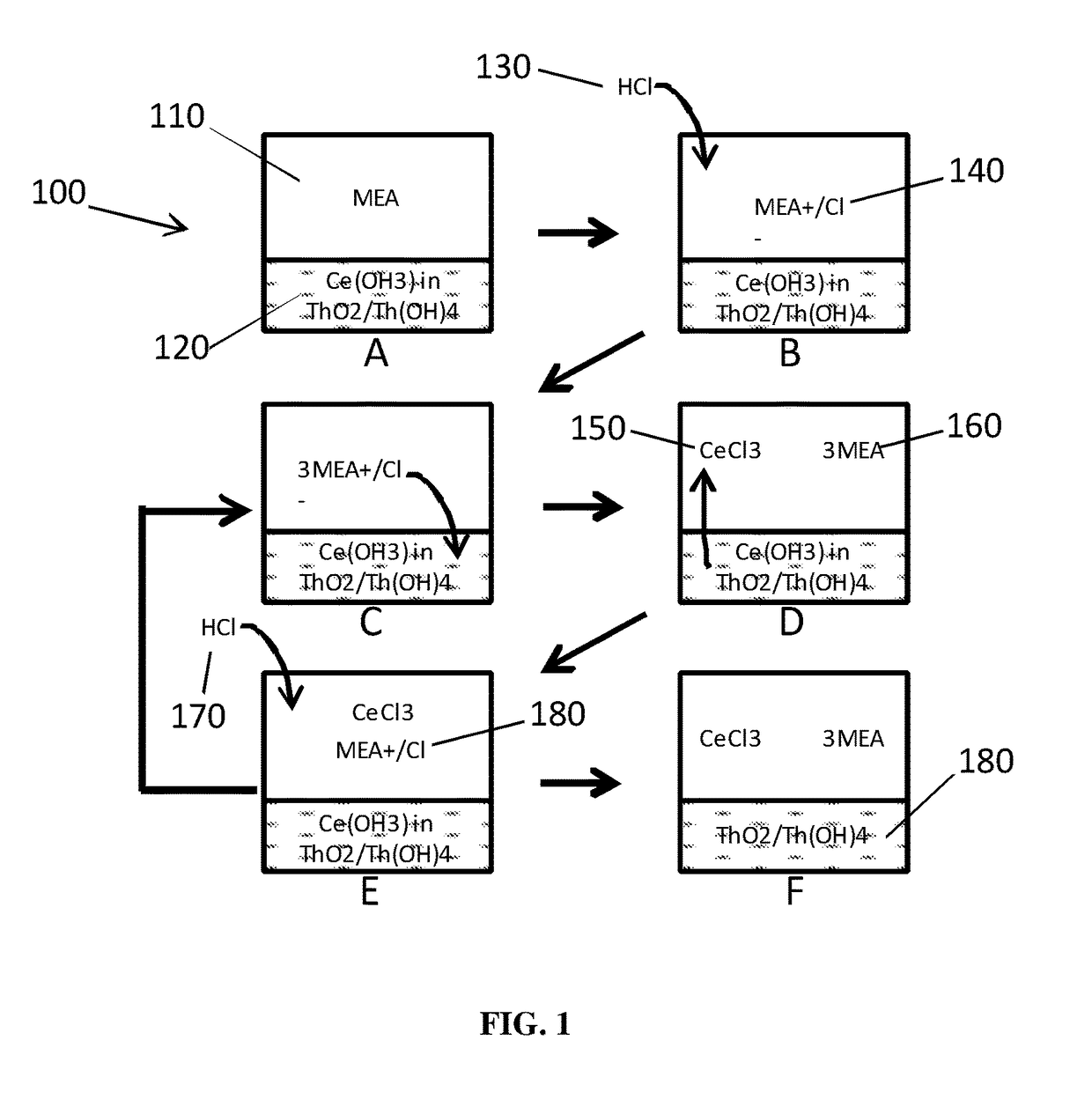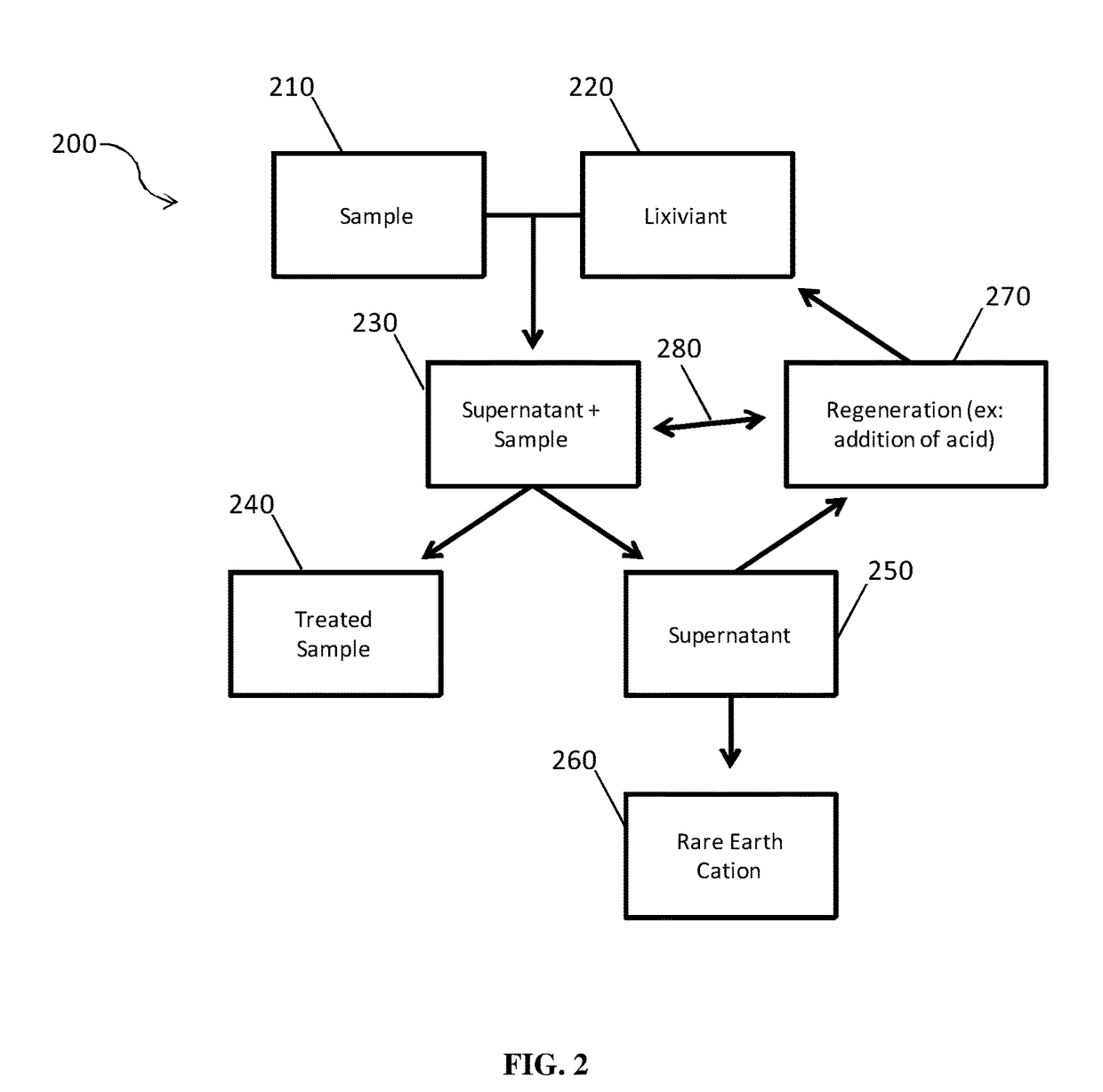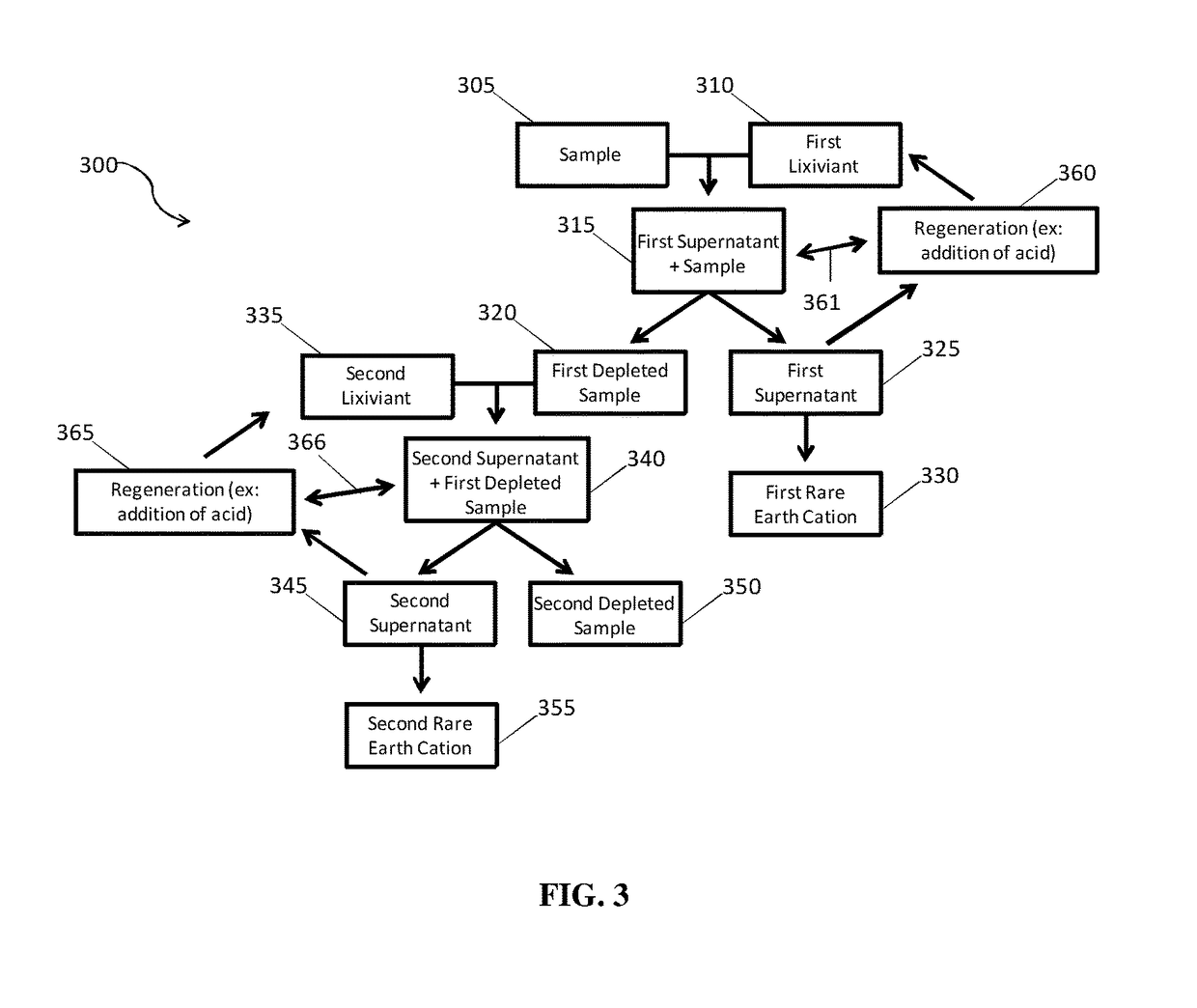Lixiviant for rare earth production
a rare earth and lixiviant technology, applied in the field of hydrometallurgy, can solve the problems of requiring the use of special equipment, presenting a hazard to workers, and significant amounts of thorium in solution, and achieve the effect of low vapor pressure and low vapor pressur
- Summary
- Abstract
- Description
- Claims
- Application Information
AI Technical Summary
Benefits of technology
Problems solved by technology
Method used
Image
Examples
Embodiment Construction
[0019]Throughout the following discussion, numerous references will be made regarding lixiviants. A lixiviant should be understood to be a chemical entity that has the ability to selectively extract metals or metal ions from inorganic or organic solids in an aqueous or other solvent mixture. Within the context of this patent the term organic amine encompasses ammonia and ammonia derivatives in addition to nitrogen containing organic compounds.
[0020]Hydrometallurgical methods, such as leaching, have long been used to recover commercially valuable metals from low yield sources, such as mine tailings. Inventors have discovered a hydrometallurgical method for the recovery of rare earth elements (i.e. rare earth metals), such as members of the lanthanide family, through the use of lixiviants that include organic amines. In addition inventors have determined that such organic amine-based lixiviants can be regenerated during and / or after processing, permitting the organic amines to act in ...
PUM
| Property | Measurement | Unit |
|---|---|---|
| purity | aaaaa | aaaaa |
| purity | aaaaa | aaaaa |
| purity | aaaaa | aaaaa |
Abstract
Description
Claims
Application Information
 Login to View More
Login to View More - Generate Ideas
- Intellectual Property
- Life Sciences
- Materials
- Tech Scout
- Unparalleled Data Quality
- Higher Quality Content
- 60% Fewer Hallucinations
Browse by: Latest US Patents, China's latest patents, Technical Efficacy Thesaurus, Application Domain, Technology Topic, Popular Technical Reports.
© 2025 PatSnap. All rights reserved.Legal|Privacy policy|Modern Slavery Act Transparency Statement|Sitemap|About US| Contact US: help@patsnap.com



